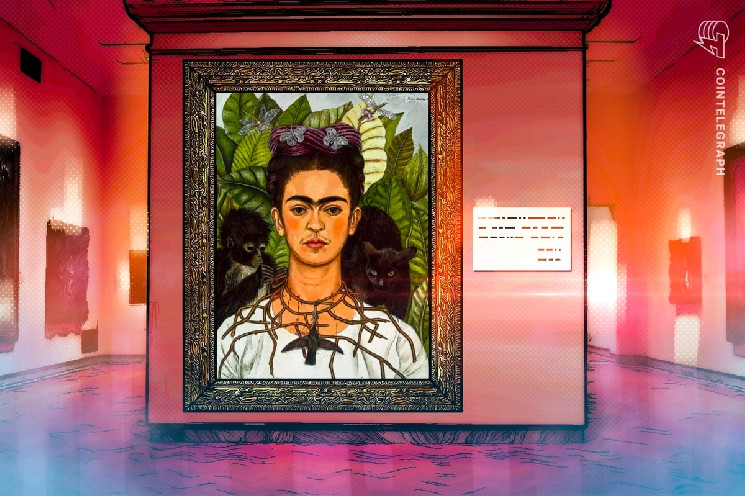NFT
The “mainstreamification” of NFTs initially gained a foothold in the art world, overcoming the industry’s inherent problems and presenting a use case that was relatively easy for the average consumer to understand. Since then, new trends have emerged, shaping the face of NFT art today and influencing its future trajectory. In particular, the recent popularity of Bitcoin NFTs and open edition collections shows that artists, collectors, and the art community still appreciate NFTs, despite the criticism these assets have faced since their prominence.
An industry marred by tradition and middlemen
The art world is notoriously challenging to break into, especially for artists without connections or the financial resources necessary to attend prestigious art schools. The industry is known to be ruled by gatekeepers – leaders of major galleries, museums and auction houses – who ultimately decide what qualifies as high-quality art and which artists deserve the most attention.
Assuming artists can overcome these initial obstacles, they then face a new set of challenges and frustrations. Galleries and auction houses take a significant percentage of their revenue in the form of commissions, allowing artists to derive minimal profit from their work. Due to the extreme opacity of the art world, there is also little transparency in pricing and third-party sales. In other words, despite being the reason for an artwork’s existence, artists have very little control over pricing, sales, and profit.
The traditional art world has not only been unfair to artists. Many aspiring collectors struggle to enter the market, mainly due to the high price tags attached to artwork and limited access.
The promise of NFTs
Join the community where you can transform the future. Cointelegraph Innovation Circle brings together blockchain technology leaders to connect, collaborate and publish. Sign up today
NFTs have democratized access to the art world in unprecedented ways, opening up new opportunities for artists who might otherwise not have been able to live off their passions. NFTs eliminate the middlemen and the confusion they create around transactions. This freedom and transparency allows creators to sell directly to interested buyers, get a greater profit from their work, and access or verify all transaction data indefinitely.
Anyone, anywhere in the world can make and sell an NFT, building a community of fans and collectors who appreciate their work. Collectors can also enter the market more easily. They have a better view of which artists are out there and they can buy the works of these artists directly without the additional costs imposed by third-party sellers. In addition, fractional NFTs allow collectors to invest in parts of works without having to buy them outright themselves.
NFTs have their own challenges
Any new technology brings friction, and NFTs are no exception. NFTs have received criticism on multiple fronts, including lack of regulation, susceptibility to fraud, insufficient copyright protection, and the challenges in generating smart contracts for the NFTs. In addition, the controversy over the enforcement of artist royalties on NFT marketplaces, a critical source of revenue for creators, has intensified the debate.
Fortunately, existing solutions or developments are underway to create a more seamless user experience while also addressing security issues. As evidenced by OpenSea’s efforts to retain users and compete with rivals, marketplaces will continue their competition for users, necessitating the enforcement of royalties or other long-term benefits to artists.
The NFT art community may look different, but it is alive and well
NFT art has evolved significantly since its inception. While the NFT space used to be flooded with low-quality projects created by individuals seeking a quick profit, the market’s maturation and adjustments have eradicated some of the opportunistic and fraudulent actors. The truly passionate and talented makers and collectors remain, resulting in a smaller but stronger market.
The current Bitcoin and open edition NFT trends are also opening up new avenues for artists to showcase and sell their work to a diverse audience. The former allows artists to tap into the Bitcoin ecosystem, while the latter unlocks a wider range of potential buyers by removing the limit on the number of artworks that can be minted as part of a collection.
While critics once saw NFTs as taking over the art world and replacing traditional, physical art, the reality is that NFTs provide a new medium for artistic expression and career advancement. It’s time for the world to recognize that NFTs have found a permanent home in the art market, not as a replacement, but as an addition to the existing art landscape. As the technology matures and the community grows, we can expect even more innovation and artistic exploration fueled by the passion of artists and collectors embracing the potential of NFTs.
Anthony Georgiades is the co-founder of Pastel Network.
This article was published through Cointelegraph Innovation Circle, a vetted organization of senior executives and experts in the blockchain technology industry who are building the future through the power of connections, collaboration, and thought leadership. Opinions expressed do not necessarily reflect those of Cointelegraph.
Learn more about Cointelegraph Innovation Circle and see if you’re eligible to join

